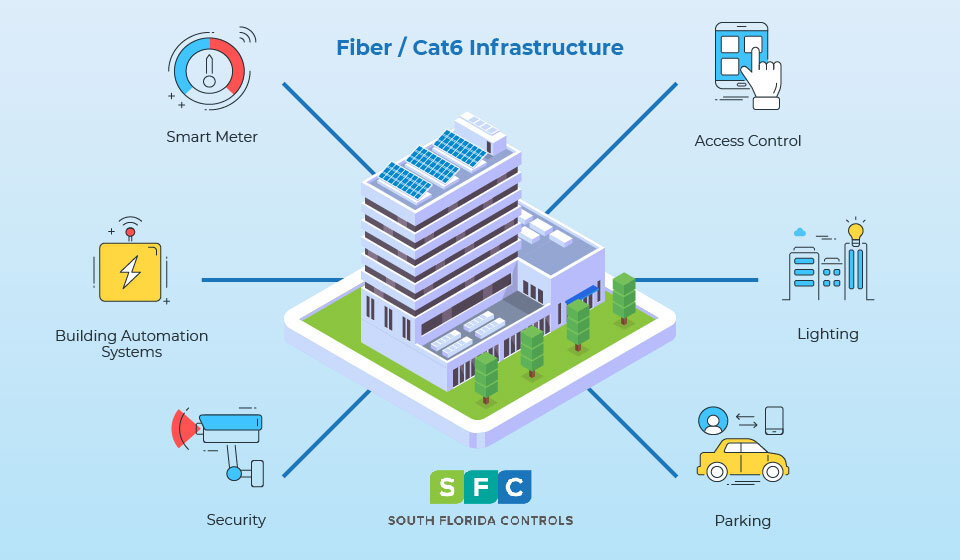The Fundamentals of Building Automation Systems Networking
In recent years, building automation systems (BAS) have made enormous strides towards embracing a networking infrastructure approach that gives building owners and managers greater freedom in the products and services they use. Even greater benefits are realized when a BAS is integrated with its technology architecture.
The importance of a good network infrastructure and BAS cannot be overstated, as technology integration between all systems will create smart buildings that enhance building operations. Even if a building isn’t completely smart, the use of networks may still be extensive.
A Networking Infrastructure Distinction
While many buildings may have connectivity between building systems like HVAC, electrical, security, and lighting control, they don’t necessarily have integration. That’s because the traditional approach has been to assign most technology choices and implementation details to multiple contractors who design, acquire, and implement infrastructure systems without collaboration.
The result? A networking infrastructure that lacks a standardized security scheme and user interface for the entire facility. Instead, building owners are left with a network of disparate systems that are more difficult to operate, maintain, and expand over the lifecycle of the building.
Key Features of a Network Infrastructure
A networking infrastructure enables effective, efficient, and secure communication between people, devices, and the network. Today’s Wi-Fi and Bluetooth technologies have made old BAS network technology unnecessary.
A built-in Wi-Fi infrastructure protects against spotty traditional service.
Bluetooth capabilities offer a low-power connection solution for things like smart light bulbs, etc.
Sensors serve as a building’s eyes and ears, monitoring operations around the clock and collecting data from temperature, light, and occupancy sensors, motion detectors, and smart water valves. As a building’s needs change, sensors can be added or removed.
Benefits of BAS Networking Infrastructure
A BAS improves a building’s efficiency by better managing its equipment and optimizing costs. A good networking infrastructure opens the door to opportunities that were not previously technically or economically feasible. Because a network is capable of communicating with more devices, operators can now more easily and quickly be alerted to failures or potential failures and data can be gathered to evaluate maintenance and operational effectiveness.
An integrated networking infrastructure also helps avoid duplicate costs by allowing devices to serve more than one purpose. For example, cameras used for security may also be set up to monitor pieces of equipment. A bonus savings: the need for visual inspections are eliminated and employee productivity is increased.
Maximizing Integration
A successfully integrated BAS adds greater value as a whole as opposed to each individual design discipline that has its own fixed technologies to monitor and control its respective systems. Expanding on the camera example, HVAC and lighting may also have redundant features such as visualization software, zone occupancy sensors and schedules, setup and configuration tools, communication protocols, and so on.
Networking allows you to remove duplications and minimize the number of devices needs to accomplish the same goals. Added to streamlined automation tasks, the result is eliminated inefficiencies and waste that no longer add value.
Future Opportunities
When making an investment in BAS technology, businesses should look beyond today’s structure and cast a wider net that recognizes all the advantages of a networking infrastructure. Moving forward, the convergence of BAS and a networking infrastructure will give you the ability to analyze, control, and predict energy usage in a way you previously could not. Energy accounting data from multiple devices will be reported to a common storage place and services will be able to be analyzed using any number of factors, turning data into meaningful information that helps a building, and the people who manage it, operate more efficiently.

